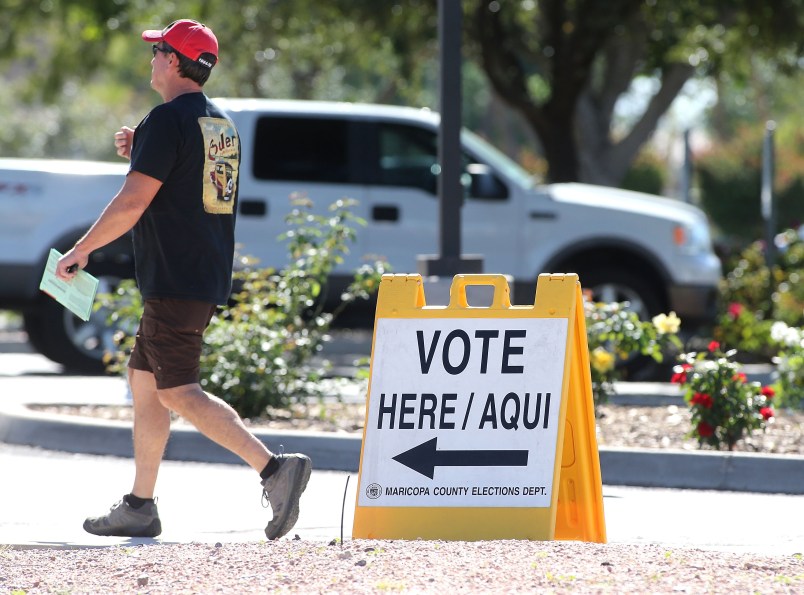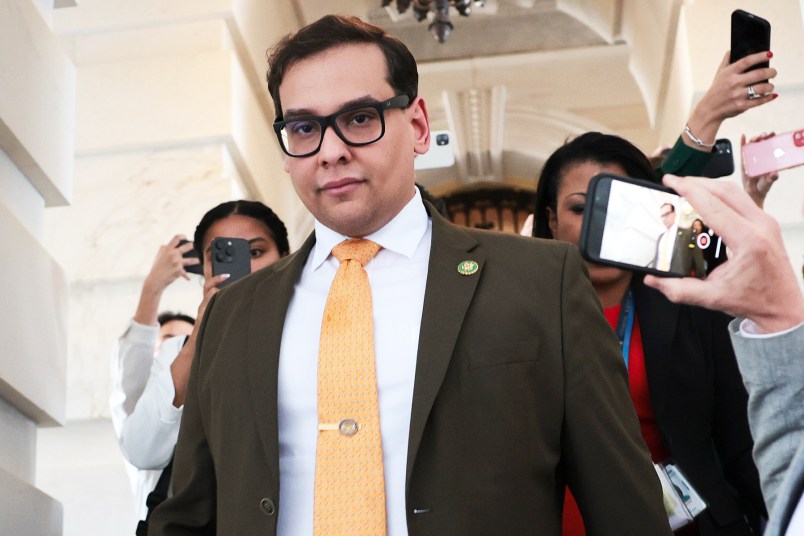Arizona’s top election officials have been enmeshed in a legal fracas surrounding mail-in voting after the state’s most populous county announced 78 poll closures just days before its primary. The state lacked sufficient cleaning supplies to keep all the locations open amid the coronavirus outbreak.
The remaining 151 polling places will all be considered vote centers, meaning that voters can cast a ballot at any of the sites no matter their precinct.
But that wasn’t enough for Maricopa County Recorder Adrian Fontes, a Democrat, who announced Friday that he’d try to mitigate the damage of so severely cutting the number of polling locations by mailing out ballots to all registered Democrats.
However, as both Republican Attorney General Mark Brnovich and Democratic Secretary of State Katie Hobbs would soon point out, Fontes only had the power under the law to send out ballots to those on the early voting list or those who requested a ballot — sending Fontes’ attempt to its death at the hands of a judge.
Fontes seemed to know that his proposal wasn’t a slam dunk from the beginning, calling the pandemic “unchartered territory” in a statement as he acknowledged the legal gray area this plan would operate in.
“There will be some who will say there is no authority to mail ballots to all voters under the law, but there is no prohibition either,” he said Friday. He intended for voters to fill out the ballots and drop them off in receptacles outside the polls, to cut down on person-to-person contact.
Fontes told TPM that he acted out of concern for the vulnerable populations in the state. “That’s why I proposed what I did, of course I’m concerned,” he said. “We have a lot of older voters and people who live with older voters. Every human being is a vector for this virus.”
But for Brnovich, that was not enough to outweigh the silence of the law.
He filed a complaint in Maricopa County Superior Court later on Friday. He emphasized that Fontes does not have the enumerated power to send ballots to voters who do not request a ballot or are named on the early voting list.
“Arizona and its voters will be irreparably harmed if the Defendants are permitted to mail ballots without legal authority, thereby creating a swarm of illegal ballots and immense voter confusion,” Brnovich wrote in his complaint.
Brnovich gained an unlikely ally in his opposition to Fontes’ actions: Hobbs.
“As you know, I fully agree with you that authority for counties to conduct all-mail elections is good policy, and certainly an appropriate contingency plan in the event of a public health emergency like this. Unfortunately, it is not currently authorized by the law,” she wrote in an email to Fontes obtained by The Arizona Republic.
Her office did not respond to TPM’s request for comment.
A Maricopa County Superior Court judge sided with the bipartisan duo and granted a temporary restraining order to keep Fontes from mailing the ballots.
Fontes said that the order came down just in time to stop him from loading the trucks with ballots, the mailing of which had already been coordinated with USPS.
In an interview Monday, Fontes blasted Hobbs, as well as the Republican governor’s administration, saying that as far as he’s concerned, “there are no excuses. The secretary of state and governor have some explaining to do.”
For now, it appears the primary will go ahead as planned, with fewer places to vote, but with those voting centers open to everybody, no matter their home precinct.
Still, it wouldn’t be the first time voting centers turned out to be less a panacea and more a headache for primary voters in the state.
In 2016, Maricopa County rolled out its new voting center system for the presidential primaries. On its face, the system seemed to be loaded with perks for voting rights activists: there would be more options for voters and fewer Election Day workers needed, meaning that those who are stationed could be more experienced and knowledgeable.
But in reality, the rollout was a disaster. With only 60 vote centers to replace more than 200 precincts, voters waited in egregiously long lines. Accusations were levied that the placement of the vote centers hurt minority communities, and that a lack of sufficient voter education created general chaos come Election Day.
Two years later, a snafu with check-in equipment at vote centers and polling places created so many issues during the 2018 midterms that some people had to travel to other polling locations to vote.
“Those were not the same problems, those were different issues,” said Fontes, whose administration was only in place for the 2018 midterms, not the 2016 rollout. “This one could’ve been solved, voters could’ve gotten their ballots in the mail and received them today or tomorrow,” he added, turning his attention back to the Tuesday primary.
He gasped and let an expletive fly on the phone — a news alert had just lit up his screen saying that President Donald Trump had issued an advisory against gatherings of 10 people or more…less than 24 hours before Arizonians were to take to the polls.
“Is that an order or advisory?” he asked incredulously. “And will my governor pay attention to it?”



